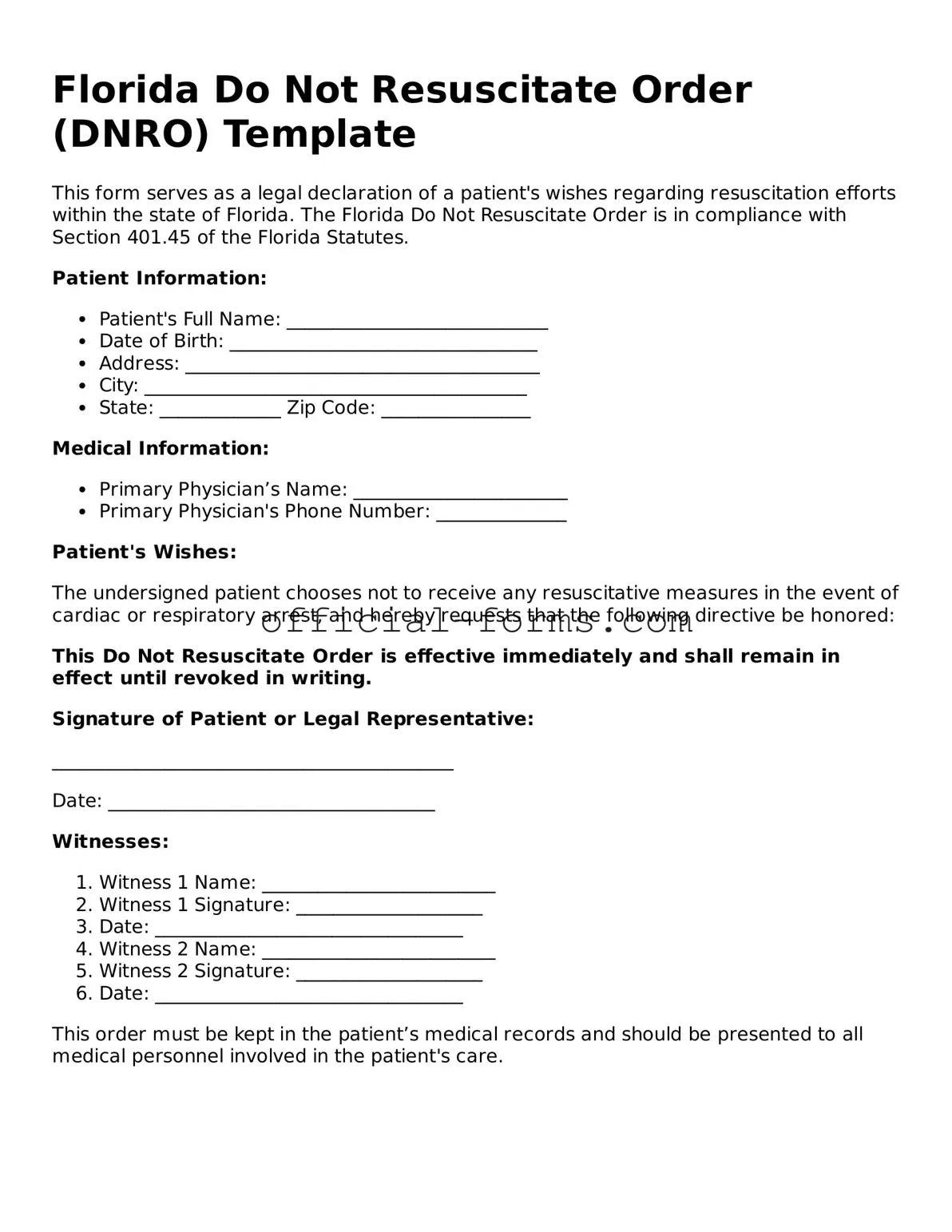Completing the Florida Do Not Resuscitate Order form is a critical step for individuals who wish to express their end-of-life preferences. However, many make common mistakes that can lead to confusion and unintended consequences. Awareness of these errors can help ensure that the form accurately reflects one's wishes.
One frequent mistake is failing to sign the form. The signature is essential for the document to be valid. Without it, healthcare providers may not honor the request. Additionally, neglecting to date the form can create issues, as it is important to establish when the wishes were made.
Another error involves not having the required witnesses. Florida law mandates that the form must be signed in the presence of two witnesses. If this step is overlooked, the form may be deemed invalid. It is crucial to ensure that the witnesses are not related to the individual or beneficiaries of their estate.
Some individuals mistakenly use outdated versions of the form. The Florida Department of Health periodically updates its forms. Using an old version can lead to complications. Always verify that you have the most current form available.
Inaccurate information can also pose problems. Individuals should double-check that all personal details, such as name and date of birth, are correct. Errors in this information can cause delays or confusion in emergency situations.
Another common mistake is not discussing the order with family members or healthcare providers. Open communication is essential. If family members are unaware of the order, they may not support the individual's wishes during a medical crisis.
Some people overlook the importance of reviewing the order periodically. Life circumstances change, and so may one's preferences regarding resuscitation. Regularly reviewing and updating the form ensures that it continues to reflect current wishes.
Failing to provide copies of the completed form to relevant parties is also a mistake. It is important to give copies to healthcare providers, family members, and keep one for personal records. This ensures that everyone involved is aware of the individual's wishes.
Lastly, individuals may not fully understand the implications of the Do Not Resuscitate Order. It is vital to comprehend what it means and how it will affect medical care. Seeking guidance from a healthcare professional can clarify any uncertainties.
